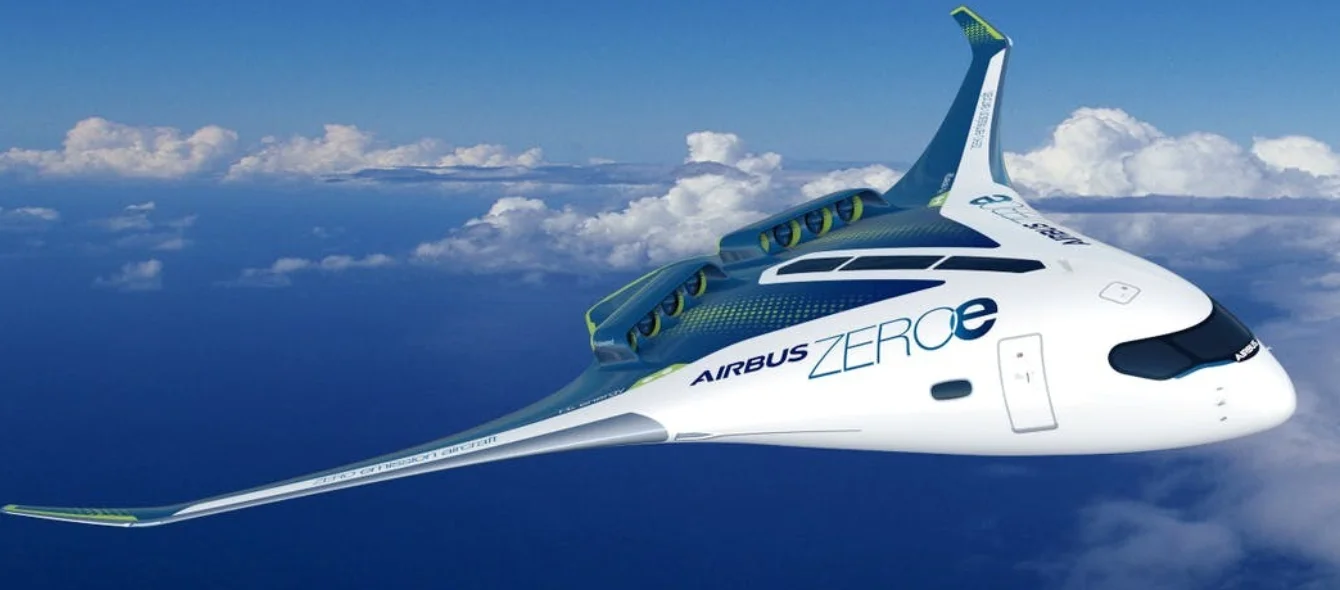To date, aviation decarbonisation efforts have largely focused on the use of biofuels and ways of achieving greater fuel efficiency, for example through the use of lighter aircraft construction materials. However, other options are emerging, and on a relatively quick timescale.
In June, a battery-powered six-seater aircraft, built by US company ZeroAvia, flew over the UK, the largest battery-powered aeroplane in Europe to do so. The company says it can develop 10-20 seater planes within three years and aircraft with 50-100 seats by 2030.
Energy-to-weight ratio
However, these larger aircraft are unlikely to use batteries. A Boeing 747, for example, at 400 tons, needs 90 MW of energy to get airborne. This would require a huge battery and would add too much weight to the plane to be viable. Moreover, while fossil fuel is consumed in flight, reducing weight, the deadweight of a battery remains the same. Add in the fact that battery performance declines with the number of charge and discharge cycles, and the technology does not look so promising as a zero carbon option for large planes engaged in commercial aviation. The energy-to-weight problem is not unique to aviation. It is a key issue in developing zero carbon transport solutions in shipping and for heavy-duty road transport.
ZeroAvia: First hydrogen-electric fight
Recharging inflight does not look like an option for commercial aircraft, although it has been tried. In what was an extraordinary technological feat, the Solar Impulse II aircraft famously circumnavigated the world in 17 stages in 2015 and 2016 recharging in flight with the aid of solar power. But, again, the energy-to-weight problem was evident. Solar Impulse II had a wing span almost as large as an Airbus A340, but weighed only slightly more than the average SUV.
Hydrogen powertrains
ZeroAvia is targeting hydrogen fuel cell powertrains for its larger aircraft because the energy-to-weight ratio is much more promising than batteries.
So, too, are bigger players. According to European aircraft manufacturer Airbus, hydrogen has an energy density per unit mass three times higher than traditional jet fuel. Under its ZEROe programme, Airbus aims to develop the world’s first zero-emission commercial aircraft by 2035. In September, the company unveiled three concepts for zero-emission planes, all of which entail hydrogen fuel cell powertrains.
ZeroAvia says aircraft with over 200 seats and a range of more than 3,000 nautical miles – sufficient to fly from London to Bangkok, with a fuel stop in Dubai — are possible by 2040, without any fundamental scientific breakthroughs.
In fact, on September 25, the company completed the world’s first hydrogen fuel cell powered flight of a commercial grade aircraft, a retrofitted six-seater Piper M-Class. The project is part of the HyFlyer project, which is supported by the UK government and the Aerospace Technology Institute. A test flight of 250-300 nautical miles is expected by the end of the year.
Big challenges
However, Airbus flags up a number of challenges, not least reducing the weight of fuel cell powertrains and the cost of renewable hydrogen production. Renewable hydrogen is produced using an electrolyser to split water molecules. In a fuel cell, the process is reveresed; hydrogen is fed in as a fuel to produce the electricity which powers the plane’s electric engines.
To be sustainable, the electricity that feeds the hydrogen-producing electrolyser must be renewable. Today, less than 1% of hydrogen is made in this way. Producing enough hydrogen for the aviation industry alone will require a huge build up of renewable energy capacity, such as wind, both on and offshore, and solar power. It will also require a huge expansion of electrolyser capacity.
In addition, the aviation industry has stringent safety practices based on jet fuel powered engines. These would have to be developed to the same standard or higher for hydrogen. There is also the question of developing refuelling equipment and hydrogen supply to all airports, so that hydrogen fuel cell aeroplanes can refuel.
In 2019, pre-Covid-19, the aviation industry consumed 7.9 million barrels of oil a day, according to the International Air Transport Association. ATAG, the Air Transport Action Group, estimates this resulted in carbon dioxide emissions of 915 million tons. To decarbonise fully, the industry must develop zero carbon aeroplanes and roll-out the supply and refuelling infrastructure for hydrogen globally, all which must be backed by an expansion of renewable energy and electrolyser capacities to bring costs down to commercially viable levels.
Photo credit: © Airbus
